Like an optical shoehorn, a wide-angle lens helps you squeeze more into the picture. It’s ideal for landscape photography, not only because you can shrink huge, sweeping vistas into the frame, but also because you can exaggerate the perspective between foreground and background, for creative effect. They’re not just for the great outdoors either. When you’re photographing interiors of buildings and literally have your back against the wall, a wide-angle lens enables you to pack everything in, including the kitchen sink if you feel the need.
Fisheye (curvilinear) lenses aside, there are barely any rectilinear wide-angle prime lenses on the market for APS-C format Canon and Nikon DSLRs. Indeed, Canon only offers a 24mm lens and Nikon doesn’t sell any at all. Full-frame shooters are relatively spoilt for choice.
Most mainstream manufacturers offer an extensive range of wide-angle primes in a variety of focal lengths
Most mainstream manufacturers offer an extensive range of wide-angle primes in a variety of focal lengths. Compared with standard zoom lenses at their widest-angle settings, advantages of wide primes can include reduced barrel distortion, better sharpness towards the edges of the image frame, reduced colour fringing and less vignetting (darkened image corners).
There are some excellent ultra-wide zoom lenses on the market, but they can be big, bulky and very expensive. A relatively small, lightweight and inexpensive prime lens can be preferable when you want to go large on your viewing angle. It’s not always the case, however. For example, Sigma’s 20mm Art lens is relatively large and weighs in at almost a kilogram. Let’s take a look at all the leading contenders.
Best wide-angle prime lenses for Canon DSLRs
We’ve picked out our top ten favourite wide-angle prime lenses for Canon DSLRs, based on good image quality, handling and all-round performance at an ‘affordable’ price. We’ve therefore excluded the Canon EF 14mm f/2.8L II USM, Canon EF 24mm f/1.4L II USM, Canon EF 35mm f/1.4L II USM and Sigma 14mm f/1.8 DG HSM | Art.
They’re all excellent lenses but, for wide primes, they’re simply too expensive for most non-professional photographers to consider. Similarly, we’ve gone for mainstream lenses in most cases that include autofocus, although the manual-focus Zeiss Milvus 2/35mm is a notable exception, and it’s rather more compact and less expensive than other wide primes in the Milvus line-up. There are some other interesting manual-focus wide primes on the market, including Irix 11mm and 15mm lenses, and the Laowa 15mm Macro. They deliver good performance and value for money, but don’t quite make it into our top ten.
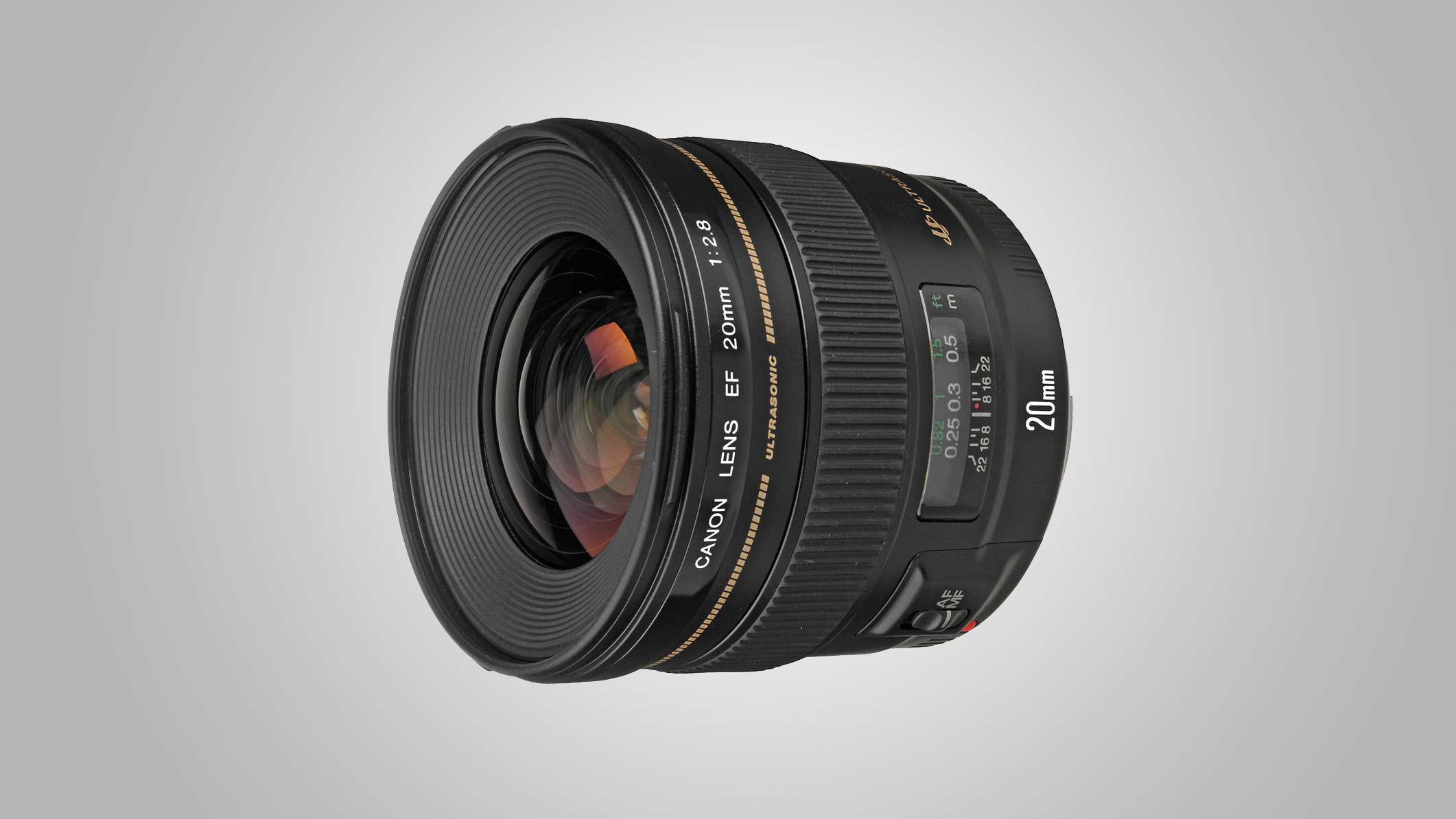
Compared with some of Canon’s recent wide primes that come complete with image stabilization, this veteran lens dates back to the last century. It’s certainly stood the test of time, with the popular combination of a 20mm focal length and an f/2.8 aperture, teaming up to deliver a very wide viewing angle and a reasonably small, lightweight build. Indeed, the competing Sigma 20mm f/1.4 lens is nearly twice as long and about 2.5 times heavier. The Canon design features aspherical and Super UD (Ultra-low Dispersion) elements, a ring-type ultrasonic autofocus system and Super Spectra coatings. Another bonus over the Sigma 20mm lens is that the Canon has a 72mm filter attachment thread, whereas the Sigma has none, due to its built-in hood. Good corner-sharpness is a big ask for such a wide-angle lens and, sure enough, images do tend to look a little soft around the edges. Centre-sharpness is comparatively good and very consistent between f/2.8 and f/8. Distortion is more noticeable than usual, and has a moustache shaped profile that’s hard to correct. Color fringing is more evident than in most competing lenses but, even so, it’s a good lens that does actually goes wider than 24-70mm and 24-105mm standard zooms.
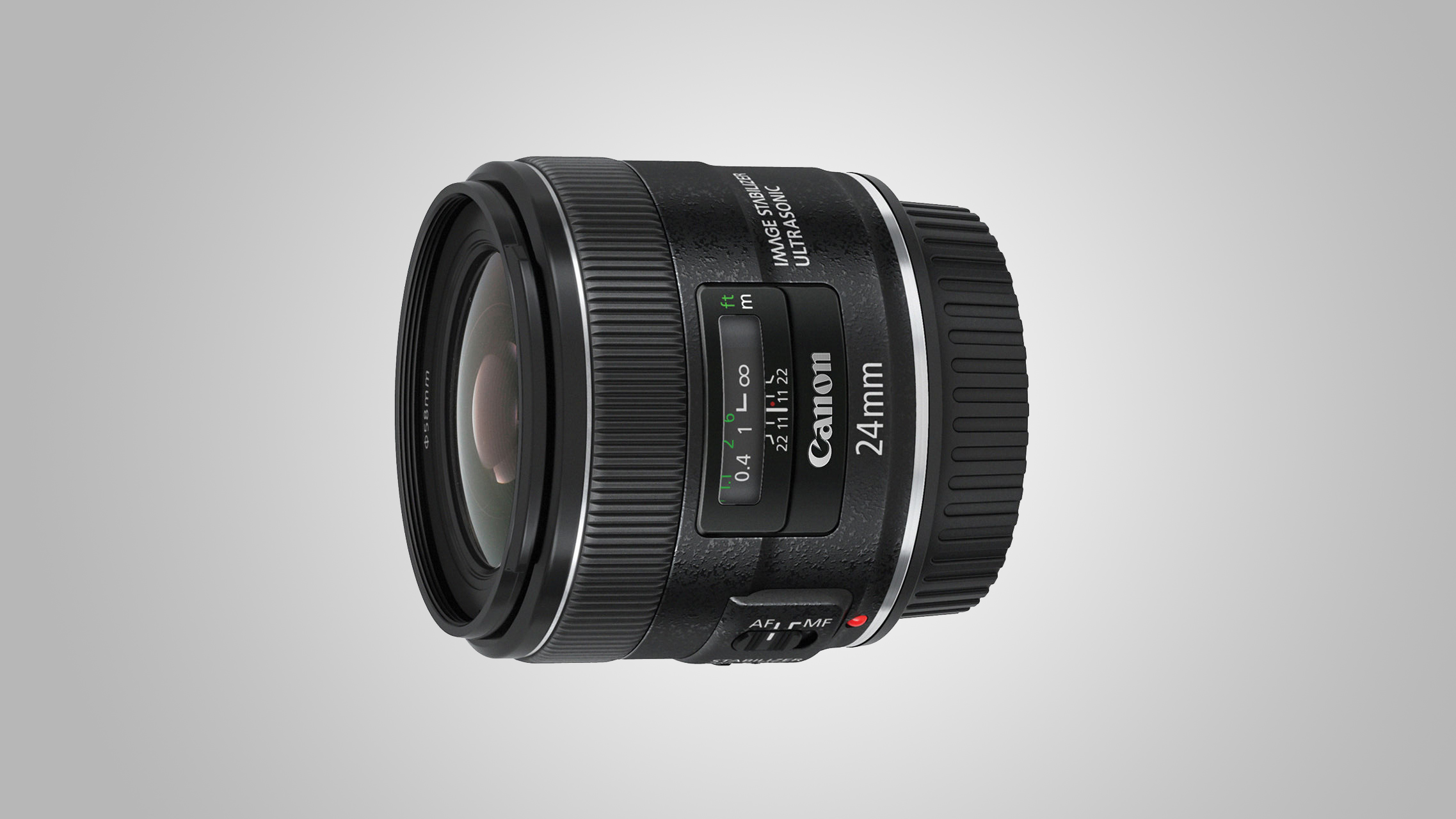
This lens is much smaller than Canon’s latest 24mm f/1.4 lens, less than half the weight, and only about a third of the price. It also adds image stabilization, which is absent on the pricier lens. Build quality and handling are very good although, like other non L-series Canon lenses, there are no weather-seals and you need to buy the hood separately. Stabilization lives up to its 4-stop claims, and sharpness is good across the whole frame at apertures of between f/4 and f/16. Corner-sharpness is relatively poor at f/2.8. Barrel distortion is quite noticeable but with a more uniform shape than from the Canon 20mm lens, and easier to correct when editing images. Color fringing can be noticeable in the extreme corners of the image but, overall, performance and image quality are very satisfying
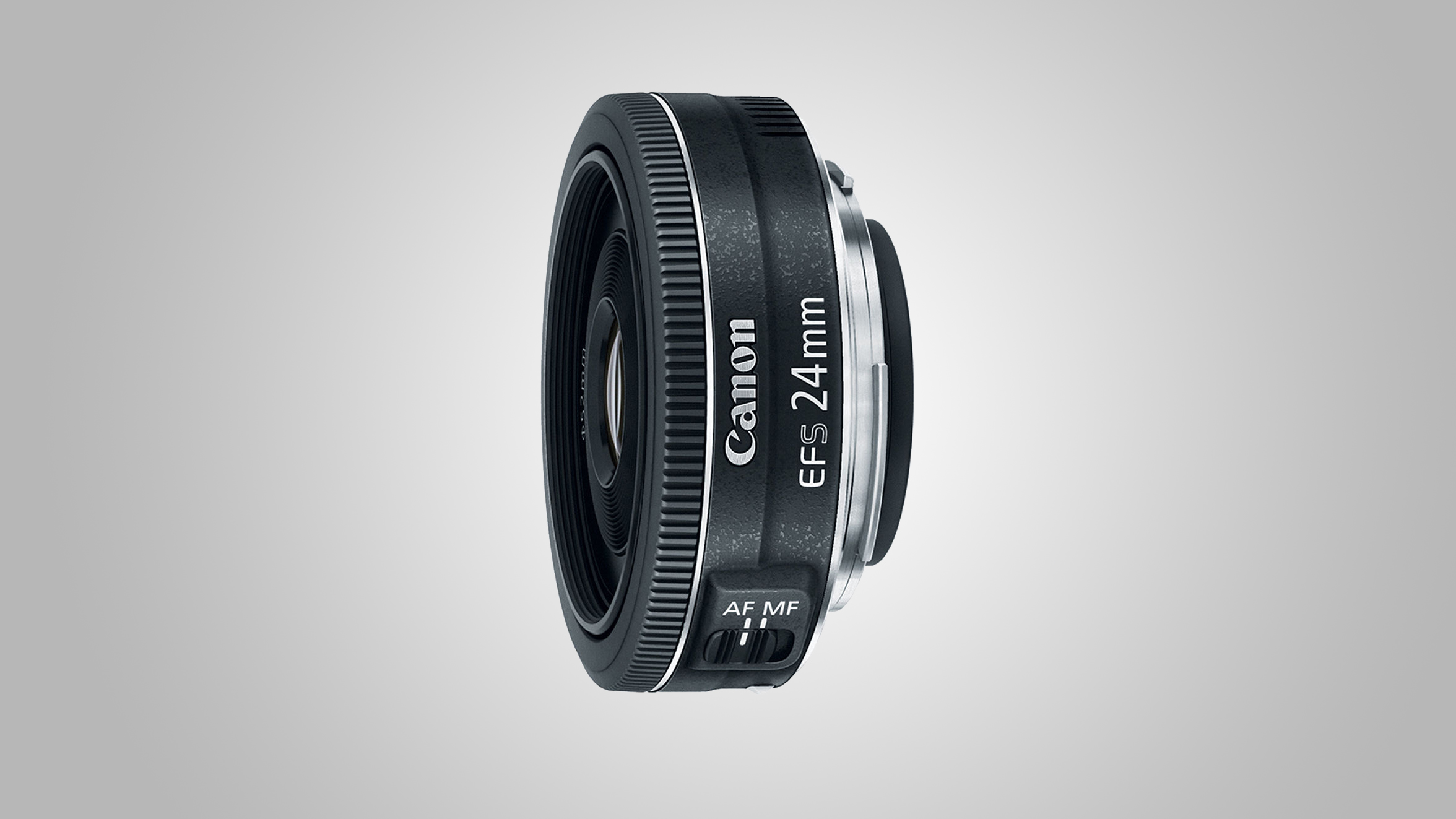
This is the only wide-angle prime lens that Canon manufacturers specifically for APS-C format DSLRs. Naturally, you could also use a full-frame compatible 24mm lens, but this ‘pancake’ lens is incredibly compact and lightweight. With an ‘effective’ focal length of 38.4mm on an APS-C body, the lens gives a natural perspective similar to using a 35mm optic on a full-frame camera. Autofocus is courtesy of a ‘gear type’ STM (Stepping Motor) system. Unlike ‘lead-screw type’ STM (more often used in zoom lenses) gear wheels are used to drive focusing, which makes the system slower and more audible, rather than being virtually silent in operation. Manual override of autofocus and fully manual focusing are available via an electronically coupled focus ring. The lens really punches above its weight in terms of image quality, with very good sharpness, negligible color fringing and only minor barrel distortion.
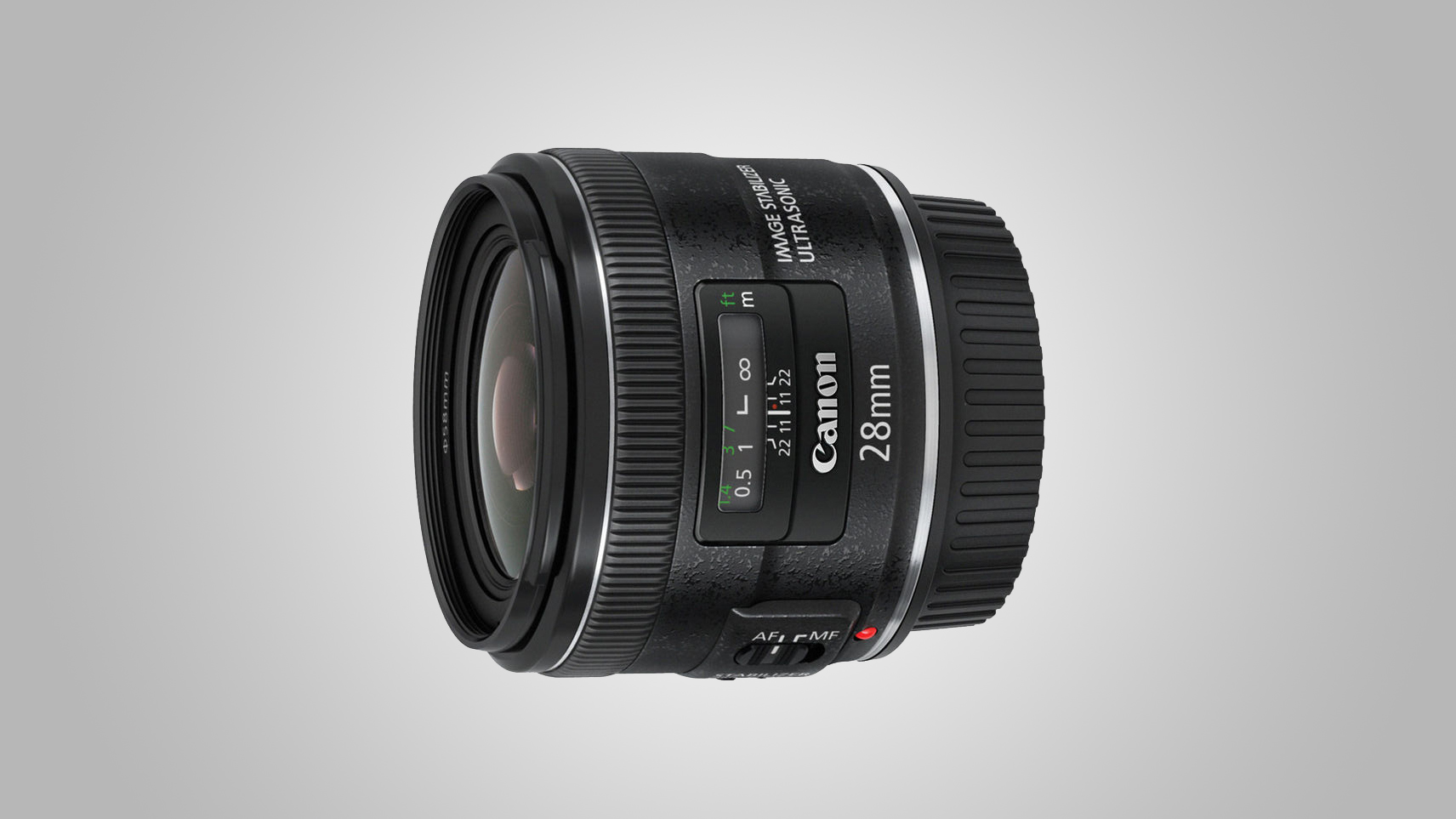
Like the Canon 24mm IS USM lens, this one has an f/2.8 aperture rating, 58mm filter thread and takes the same optional EW-65B hood. Further similarities include fully internal focusing so the barrel neither rotates nor extends, ring-type ultrasonic autofocus and the same late-generation image stabilizer with a 4-stop rating. The only significant difference is that the 28mm lens gives a narrower angle of view measuring 75 degrees on the diagonal, compared with 84 degrees for the 24mm lens. Another slight difference is that the 28mm lens has a longer minimum focus distance of 0.23m compared with the 0.2m for the 24mm. Both lenses are very similar in terms of image quality. The 28mm delivers very marginally better centre-sharpness at apertures of f/4 to f/5.6, while edge-sharpness is very slightly worse at f/5.6. This lens also produces marginally less color fringing and barrel distortion.
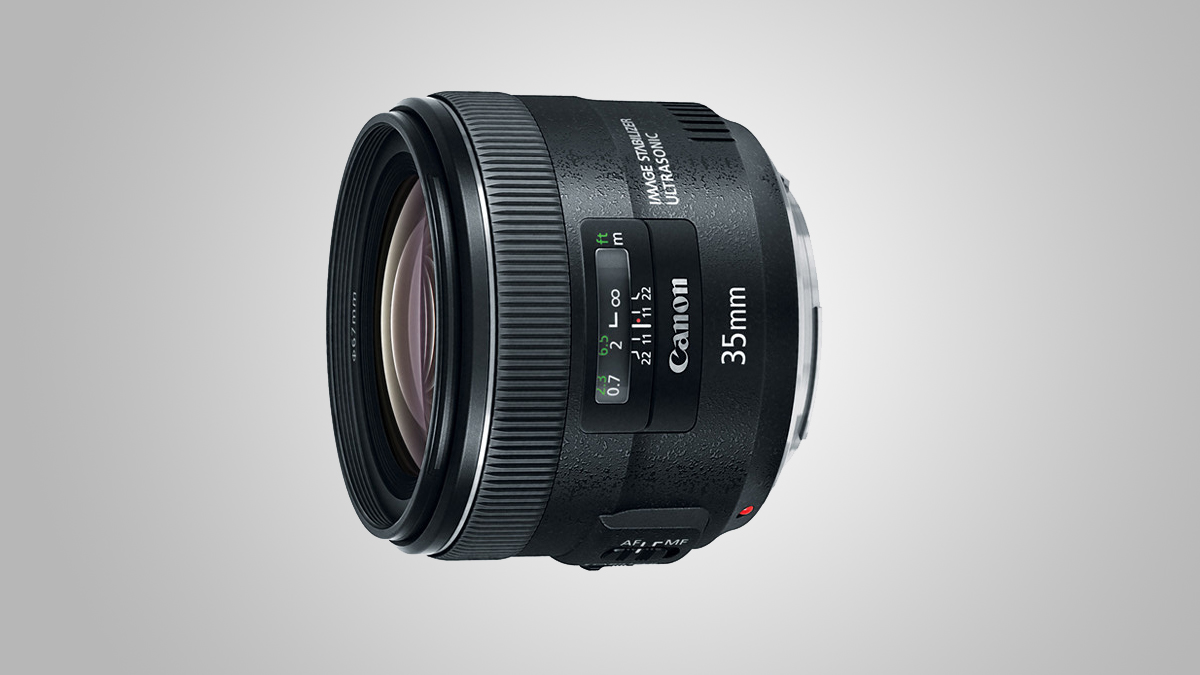
With a focal length of 35mm, this lens gives the narrowest viewing angle of any Canon in the group, at 63 degrees, but it also has the widest aperture rating of f/2. That makes it a full f/stop faster than the f/2.8 lenses. It still features an image stabilizer, which is of the same late generation and 4-stop rating as those of the Canon 24mm and 28mm ‘IS’ lenses. Physically a little wider and heavier than the Canon 24mm and 28mm lenses, at 78x63mm and 335g, this is still a relatively small and light lens, especially when compared to Canon and Sigma 35mm f/1.4 lenses. It’s also noticeably smaller than the Tamron 35mm f/1.8 lens which, like this one, features image stabilization. Centre-sharpness is excellent, even at the widest aperture of f/2, while corner-sharpness becomes very good at f/4. In fact, sharpness in the edges and corners of the frame beats that of any of the other Canon lens in this group, throughout the aperture range. Color fringing is also better controlled than in the other Canon lenses. Barrel distortion is marginally more noticeable, but still fairly minimal. All in all, it’s a very good lens that’s easy to live with.
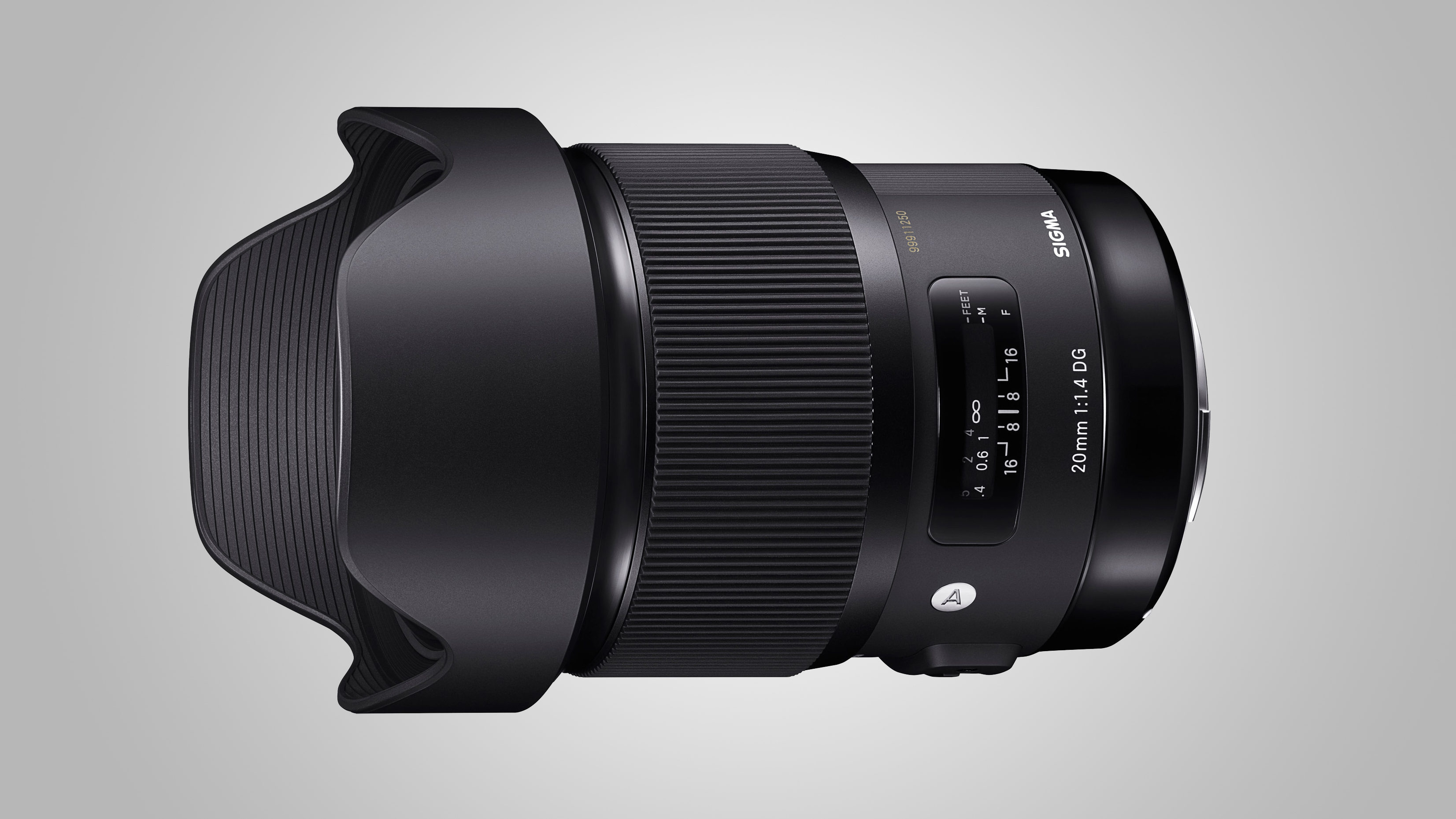
With a short 20mm focal length, this lens goes extra-large on viewing angle while retaining the same f/1.4 aperture rating as most other Sigma ‘Art’ series prime lenses. It’s actually the world’s first ultra-wide lens to achieve this, by using a large-diameter double aspherical element that poses a significant manufacturing challenge. The optical path includes two FLD (Fluorite-grade Low Dispersion) elements and no less than five SLD (Special Low Dispersion) elements, aiming to deliver excellent sharpness and contrast, with minimal colour fringing. Build quality is excellent although, as with most other Sigma Art lenses, weather-seals are not featured. There’s no getting away from the fact that the wide viewing angle combined with a wide aperture rating result in a big build, and it’s the heaviest lens in the group at nearly a kilogram. There’s a built-in lens hood to protect the large, bulbous front element, but this precludes the use of regular screw-in filters or filter holders. Help is at hand from Lee Filters, who make a dedicated adaptor for use with its SW150 Mk II filter system. For such an ultra-wide-angle lens, sharpness is superb across the whole frame. Color fringing is fairly minimal and barrel distortion has quite a regular shape that’s easy to correct during image editing.
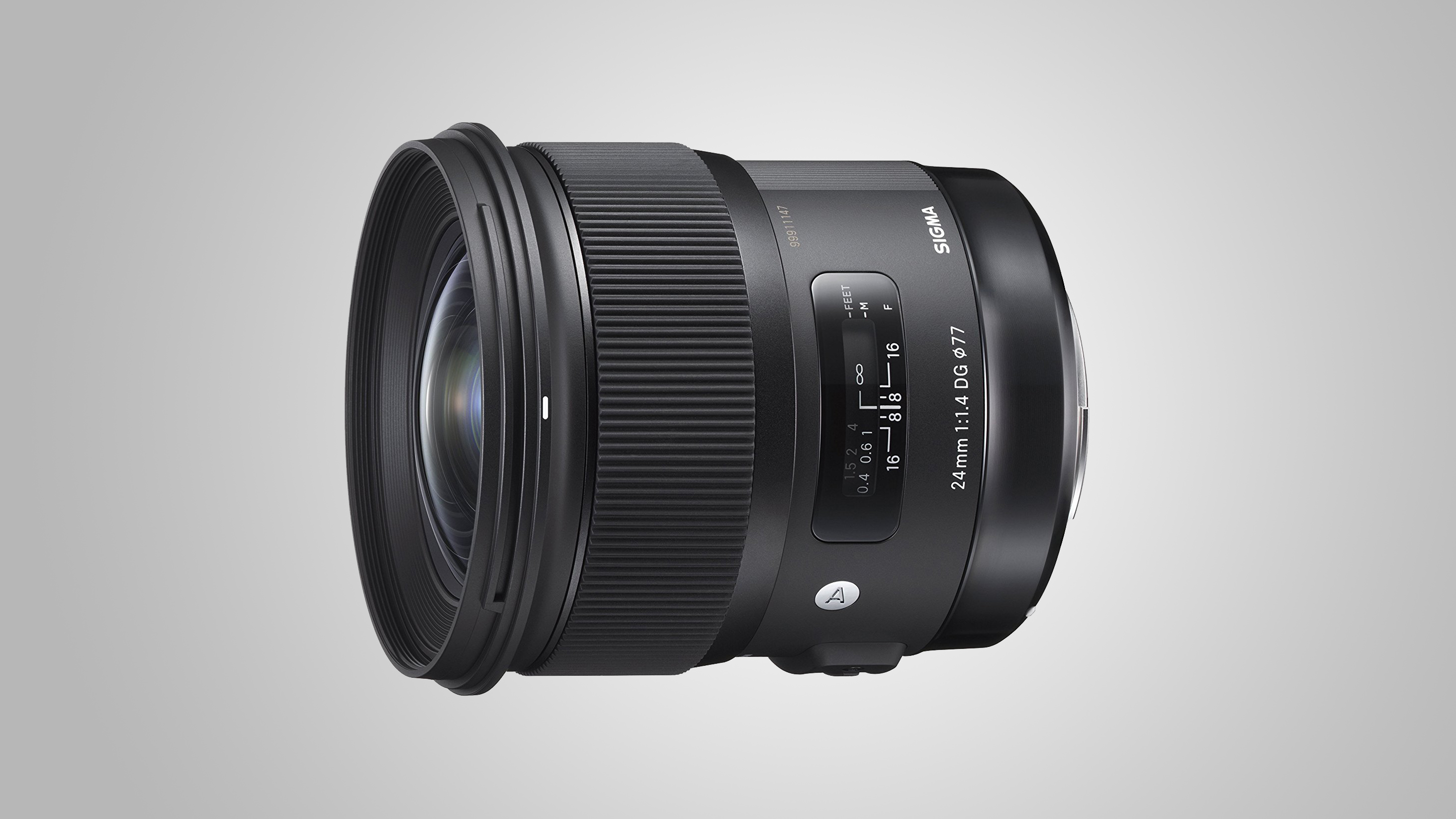
Much smaller and lighter than the Sigma 20mm Art lens, this 24mm optic is barely any bigger than the Sigma 35mm and exactly the same weight. Unlike the 20mm lens, this one comes with a separate hood and has a filter attachment thread. Build quality is excellent, the ring-type ultrasonic autofocus system is fast and whisper-quiet, and the manual focus ring operates with smooth precision. Again, there are no weather seals but, like the other Sigma lenses featured, this one is compatible with Sigma’s optional USB Dock, for applying firmware updates and customisation. Up-market glass includes three FLD (Fluorite-grade Low Dispersion) elements and four SLD (Special Low Dispersion) elements, as well as two aspherical elements. As in other Sigma lenses, Super Multi-Layer Coatings are applied to combat ghosting and flare. Edging ahead of most competing lenses, the Sigma 24mm delivers fabulous sharpness across the whole image frame, from the centre to the extreme edges. Color fringing and barrel distortion are relatively negligible. All in all, it’s a top performer.
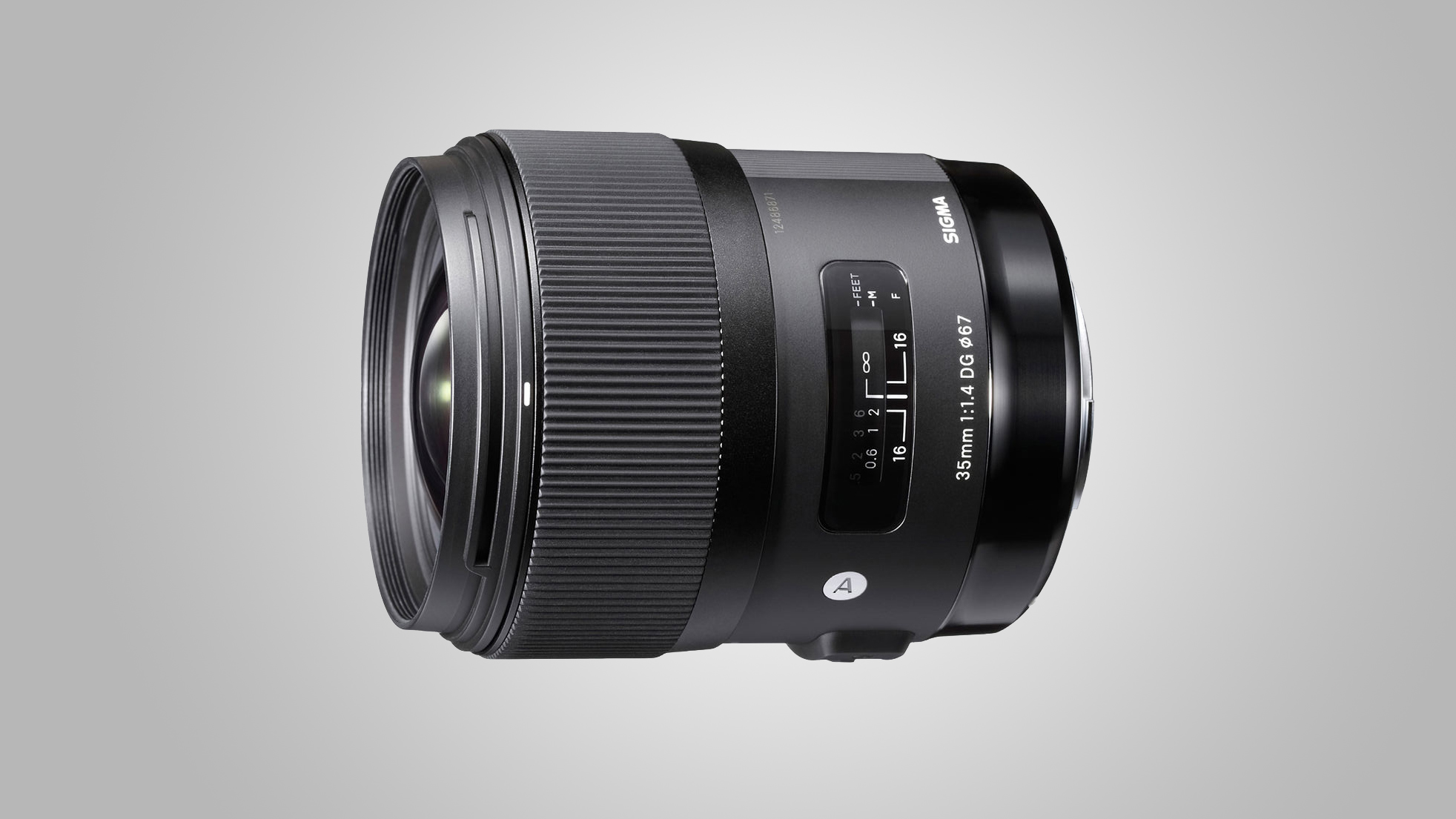
Some of Sigma’s f/1.4 ‘Art’ lenses are notoriously big and heavy, including the 20mm, 50mm and 85mm editions. Like the Sigma 24mm lens also featured, this one is more manageable yet retains the same, fast f/1.4 aperture rating. Build quality and finish are immaculate although the lens isn’t weather-sealed. Autofocus is fast and very quiet, while manual focusing is super-smooth and precise. There’s a generous amount of rotational travel and the focus ring itself is comfortably large. The Sigma goes extra-large in terms of performance. Image quality is absolutely fabulous, with epic sharpness across the whole frame, while color fringing and distortion are negligible. It’s the least ‘wide-angle’ of Sigma’s current wide primes but the 35mm focal length is preferred by many photographers for its relatively natural perspective.
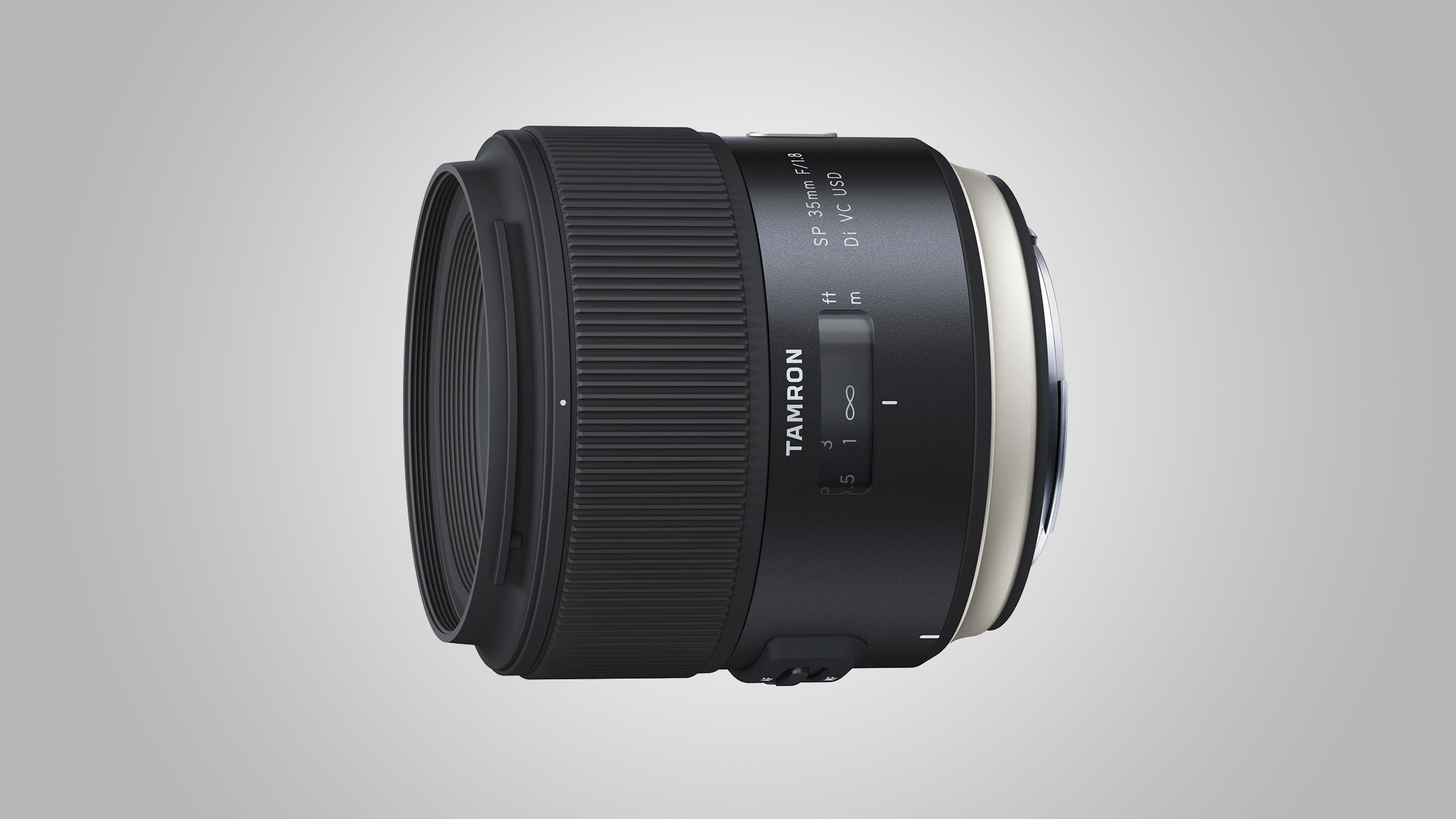
Tamron’s recently launched 35mm, 45mm and 85mm ‘super performance’ prime lenses all combine a fairly fast f/1.8 aperture and highly effective image stabilization. This is naturally the most ‘wide-angle’ lens of the three, and the widest prime lens that Tamron currently markets. Physically, it’s a little wider but shorter than the competing Sigma 35mm lens, and noticeably lighter at 480g compared with 665g. Build quality feels almost as good as in the Sigma lens, but the Tamron has the additional benefit of weather-seals. As with the Sigma lens, the Tamron is compatible with an optional USB docking station, which Tamron calls a ‘Tap-in Console’. Again, this enables you to connect the lens to a computer and apply fine-tuning as well as firmware updates. Image quality is very impressive overall, with particularly nice bokeh. However, the Tamron isn’t quite as sharp as the Sigma, across all regions of the image frame. Color fringing and barrel distortion are marginally worse but still well controlled. Overall, the Tamron is an excellent lens and a top choice if you feel the need for weather-seals and image stabilization.

Unlike the vast majority of modern lenses, the Milvus is typical of most Zeiss optics in that it’s a manual-focus affair with no autofocus facility. It’s beautifully styled, immaculately engineered with a metal barrel, and certainly feels very robust, complete with weather-seals. However, it’s relatively heavy for a 35mm f/2 lens. Manual focusing is actually quite a joy thanks to the silky-smooth focus ring. Depth of field markings are on hand f/4, f/8, f/16 and f/22, so you can easily apply ‘zone focusing’ to keep any given area of a scene rendered sharply. Another focusing aid is that built-in electronics enable the focus confirmation lamp to be illuminated in the camera’s viewfinder. Sharpness is very good rather than completely great. Contrast and colour quality are excellent but the lens lags behind some competitors for control over colour fringing and barrel distortion.
- Best Canon lenses: 10 top options for Canon APS-C DSLRs
- Best Canon lenses: 10 high-end optics for full-frame Canon DSLRs
- Best wide-angle lens: ultra-wide lenses for Canon DSLRs
Best wide-angle prime lenses for Nikon DSLRs
Here’s our top ten wide-angle prime lenses for Nikon DSLRs, based on good image quality, handling and all-round performance at an ‘affordable’ price. We’ve therefore excluded the Nikon AF-S 24mm f/1.4G ED, Nikon AF-S 28mm f/1.4E ED and Sigma 14mm f/1.8 DG HSM | A. They’re all excellent lenses but, for wide primes, they’re simply too expensive for most non-professional photographers to consider. Similarly, we’ve gone for mainstream lenses in most cases that include autofocus, although the manual-focus Zeiss Milvus 2/35mm is a notable exception, and it’s rather more compact and less expensive than other wide primes in the Milvus line-up. We’ve also included the Samyang 10mm, as it’s the only one on the list that’s designed for DX format (APS-C) cameras. There are some other interesting manual-focus wide primes for full-frame DSLRs on the market, including Irix 11mm and 15mm lenses, and the Laowa 15mm Macro. They deliver good performance and value for money, but don’t quite make it into our top ten.
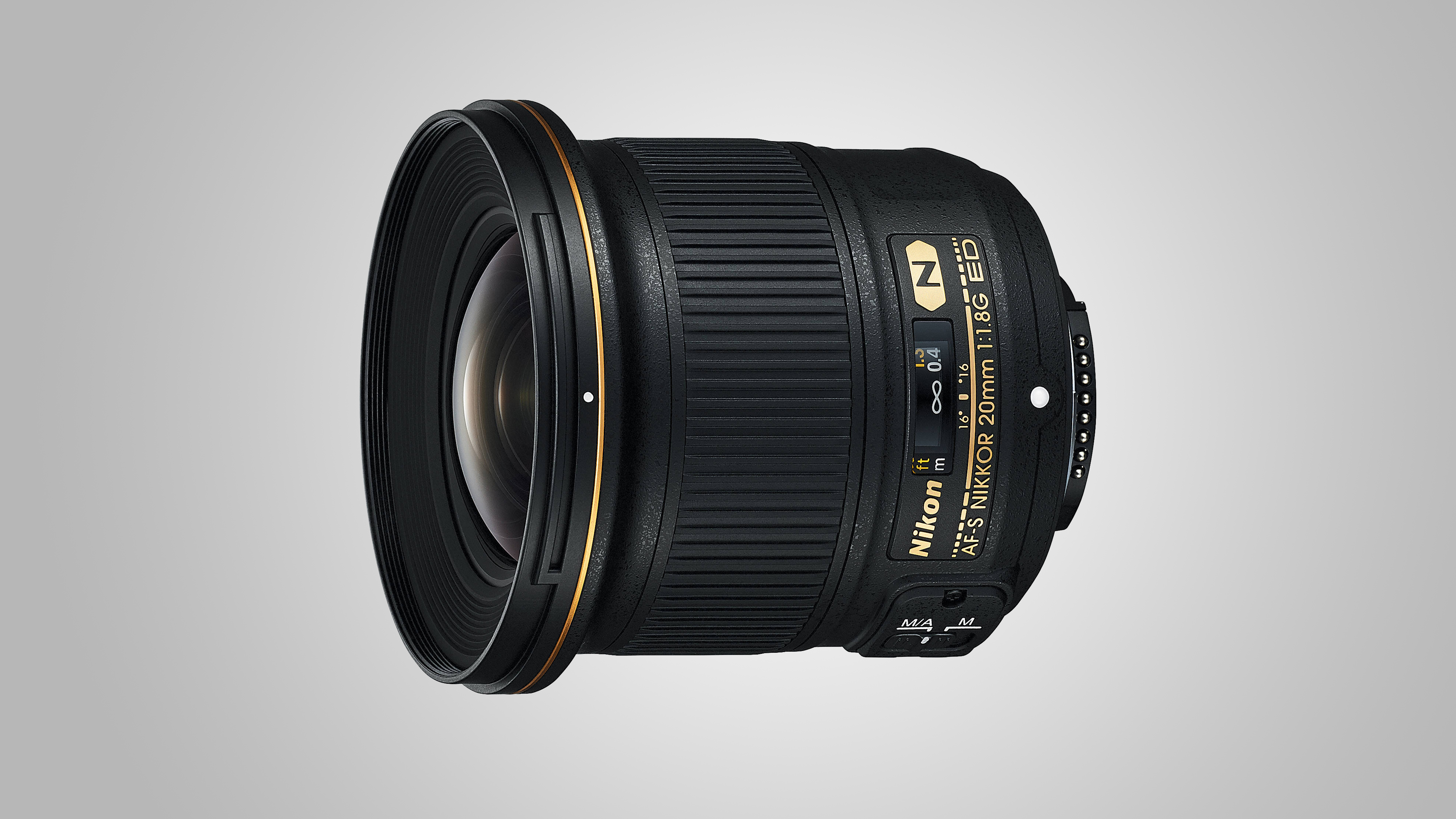
Compared with standard zooms for full-frame cameras that kick off with a 24mm focal length, this lens gives you a wider viewing angle. Considering the combination of 20mm focal length and fairly fast f/1.8 aperture, it’s quite a compact and lightweight lens. The ring-type ultrasonic autofocus system is fast and near-silent, but the rotational travel of the manual focus ring is very small, making accurate manual focusing tricky. Similarities between this lens and the Nikon 24mm (also featured) are that they both feature two ED elements, two aspherical elements and Nano Crystal Coating. At f/1.8, vignetting is very pronounced and corner-sharpness is sadly lacking. However, you only need to stop down to f/2.8 to get decent peripheral illumination, while f/4 improves sharpness across the whole frame. Color fringing can be noticeable towards the corners of the frame but barrel distortion is of a fairly low order. The competing Sigma 20mm f/1.4 Art lens offers better image quality and a faster aperture, but the Nikon lens is very much more compact and only about a third of the weight.
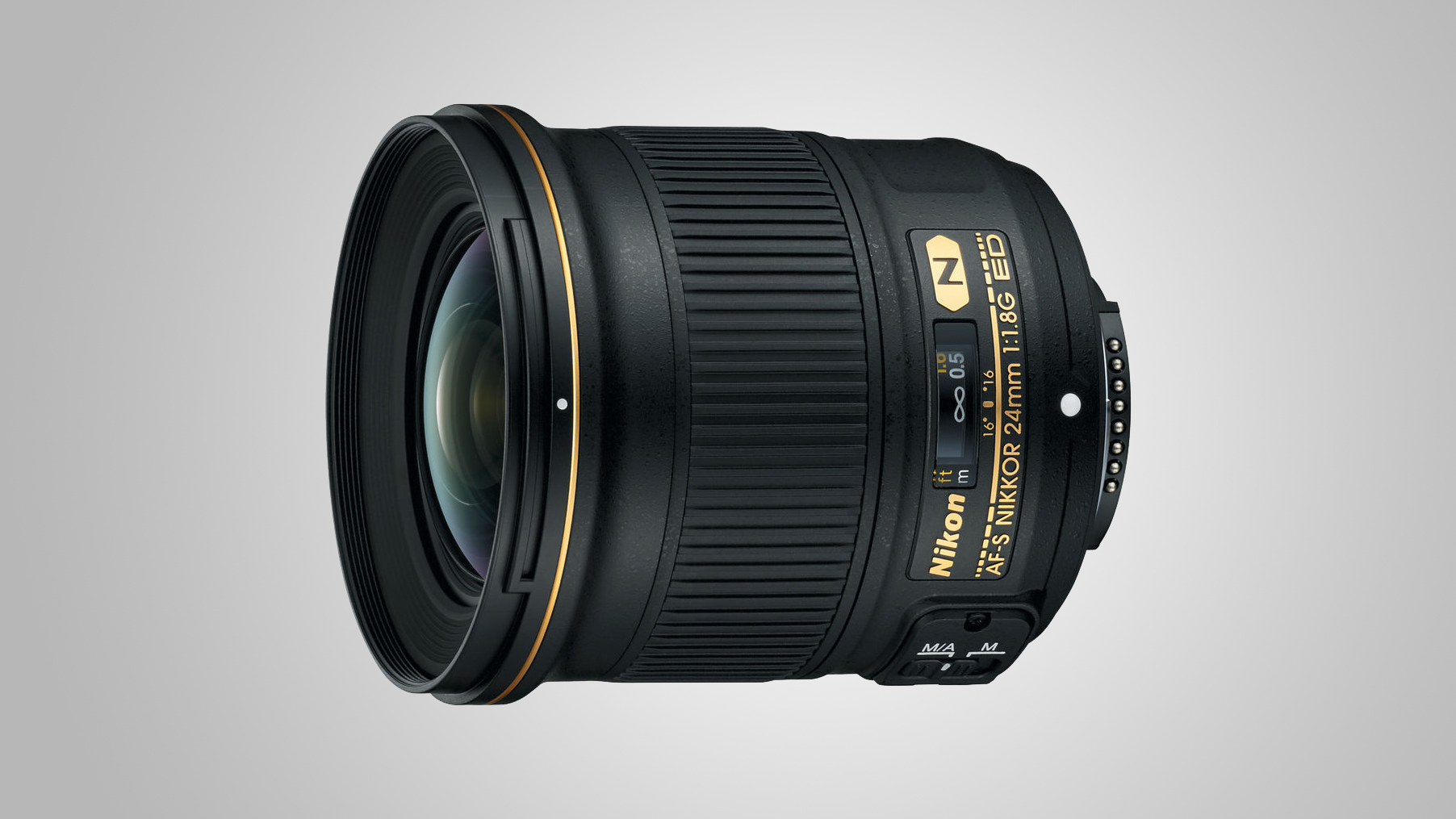
Nikon makes a variety of FX standard zoom lenses with ranges of 24-70mm, 24-85mm and 24-120mm. This lens has to deliver something rather special to make you spend a considerable sum of extra money, considering there’s no gain in viewing angle. One advantage is its wider aperture rating of f/1.8, compared with the f/2.8, f/3.5 or f/4 of the zoom lenses, making it anywhere from 1.33 to 2.33 f/stops faster. Even so, it’s still two-thirds of a stop slower than the competing (and less expensive) Sigma 24mm lens. The Nikon’s construction doesn’t feel quite as robust as that of the Sigma and neither of them are weather-sealed, although the Nikon does feature a rubber sealing ring on its mounting plate. Autofocus isn’t quite as quick as in the Sigma lens but is similarly accurate. For image quality, sharpness is very good across most of the frame but drops off noticeably in the corners at wide apertures from f/1.8 to f/2.8. The prime does better than standard zooms to keep color fringing and barrel distortion to a minimum. Vignetting is very noticeable at f/1.8 but the Nano coatings do well to resist ghosting and flare.

Bridging the gap between the classic 35mm wide-angle focal length and the seriously wide 24mm, this Nikon is a good compromise and retains the same f/1.8 aperture rating as its stablemates. It’s slightly larger and heavier than the Nikon 35mm lens, at 73 x 81mm and 330g, compared with 72 x 72mm and 305g, and has a bigger 67mm rather than 58mm filter thread. The lens features the same total count of 11 optical elements as the Nikon 35mm. This time, however, there are two aspherical elements rather than one, but no ED (Extra-low Dispersion) element. The 28mm also gains Nano Crystal Coat, for better reduction of ghosting and flare, but retains the same diaphragm blade count of seven. Again, it has ring-type ultrasonic autofocus and is supplied with a hood and pouch. Corner-sharpness at wide apertures proved much better than from the Nikon 35mm lens in our tests, but color fringing was a little worse. There’s less barrel distortion than from the Nikon 35mm lens, despite the wider viewing angle. True to its claims, the nano-structure coating does well to minimize ghosting and flare.
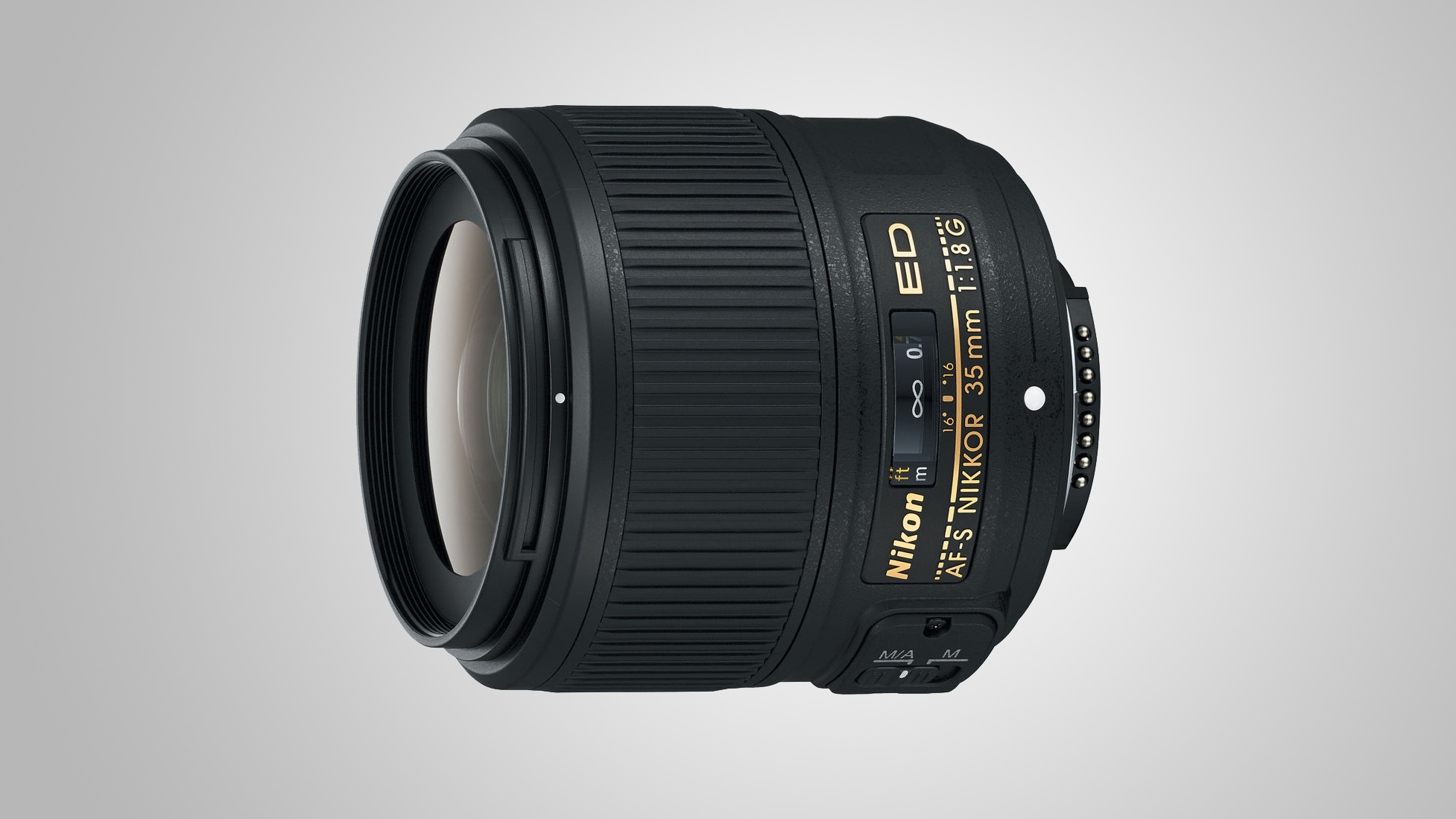
Despite being a third of an f/stop faster than the competing Zeiss Milvus 35mm f/2 lens, the Nikon 35mm is a little smaller and less than half the weight, tipping the scales at just 305g. Typical of this this class of Nikon lens, autofocus is courtesy of a ring-type ultrasonic system. It’s fast, effective and whisper-quiet, as well as enabling full-time manual override. Manual focusing is aided by a distance scale but it’s of limited benefit, with no markings between 0.7m and infinity, the positions of which are very close in terms of rotation of the focus ring. Accurate zone focusing therefore isn’t really an option. Sharpness at the corners of the frame is a little disappointing, especially at wide apertures, but it’s pretty stellar in the central region, all the way from f/2.8 to f/11. Vignetting is a little more severe than with most competing lenses and the seven-blade diaphragm isn’t the most well-rounded. Color fringing and distortion are fairly minimal. Technically, it’s not a standout lens but many photographers love it for its mostly sharp, high-contrast image quality, and its compact, lightweight build.

Designed exclusively for ‘DX’ or APS-C format DSLRs, this lens has an ‘effective’ focal length of 15mm in full-frame terms. It gives nearly double the viewing angle of most DX format standard zoom lenses, making it a worthy addition. As with most Samyang lenses, there’s no autofocus facility but the Nikon-fit edition of this lens includes electronics that enable camera-driven aperture control and the illumination of focus assist/confirmation lamps in the viewfinder. The lens hood forms an integral part of the barrel and can’t be removed, precluding the attachment of filters. Build quality feels good overall, and the focus ring has a smooth, fluid feel to its rotation, with a generous 140 degrees of travel enabling very precise focusing. There’s remarkably little drop-off in sharpness across the whole of the frame when shooting wide-open, although vignetting is severe. Barrel distortion can be quite noticeable but color fringing is fairly minimal. High-tech nano-structure coatings do well to fend off ghosting and flare.

With a short 20mm focal length, this lens goes extra-large on viewing angle while retaining the same f/1.4 aperture rating as most other Sigma ‘Art’ series prime lenses. It’s actually the world’s first ultra-wide lens to achieve this, by using a large-diameter double aspherical element that poses a significant manufacturing challenge. The optical path includes two FLD (Fluorite-grade Low Dispersion) elements and no less than five SLD (Special Low Dispersion) elements, aiming to deliver excellent sharpness and contrast, with minimal colour fringing. Build quality is excellent although, as with most other Sigma Art lenses, weather-seals are not featured. There’s no getting away from the fact that the wide viewing angle combined with a wide aperture rating result in a big build, and it’s the heaviest lens in the group at nearly a kilogram. There’s a built-in lens hood to protect the large, bulbous front element, but this precludes the use of regular screw-in filters or filter holders. Help is at hand from Lee Filters, who make a dedicated adaptor for use with its SW150 Mk II filter system. For such an ultra-wide-angle lens, sharpness is superb across the whole frame. Color fringing is fairly minimal and barrel distortion has quite a regular shape that’s easy to correct during image editing.

Much smaller and lighter than the Sigma 20mm Art lens, this 24mm optic is barely any bigger than the Sigma 35mm and exactly the same weight. Unlike the 20mm lens, this one comes with a separate hood and has a filter attachment thread. Build quality is excellent, the ring-type ultrasonic autofocus system is fast and whisper-quiet, and the manual focus ring operates with smooth precision. Again, there are no weather seals but, like the other Sigma lenses featured, this one is compatible with Sigma’s optional USB Dock, for applying firmware updates and customisation. Up-market glass includes three FLD (Fluorite-grade Low Dispersion) elements and four SLD (Special Low Dispersion) elements, as well as two aspherical elements. As in other Sigma lenses, Super Multi-Layer Coatings are applied to combat ghosting and flare. Edging ahead of most competing lenses, the Sigma 24mm delivers fabulous sharpness across the whole image frame, from the centre to the extreme edges. Color fringing and barrel distortion are relatively negligible. All in all, it’s a top performer.

Some of Sigma’s f/1.4 ‘Art’ lenses are notoriously big and heavy, including the 20mm, 50mm and 85mm editions. Like the Sigma 24mm lens also featured, this one is more manageable yet retains the same, fast f/1.4 aperture rating. Build quality and finish are immaculate although the lens isn’t weather-sealed. Autofocus is fast and very quiet, while manual focusing is super-smooth and precise. There’s a generous amount of rotational travel and the focus ring itself is comfortably large. The Sigma goes extra-large in terms of performance. Image quality is absolutely fabulous, with epic sharpness across the whole frame, while colour fringing and distortion are negligible. It’s the least ‘wide-angle’ of Sigma’s current wide primes but the 35mm focal length is preferred by many photographers for its relatively natural perspective.

Tamron’s recently launched 35mm, 45mm and 85mm ‘super performance’ prime lenses all combine a fairly fast f/1.8 aperture and highly effective image stabilization. This is naturally the most ‘wide-angle’ lens of the three, and the widest prime lens that Tamron currently markets. Physically, it’s a little wider but shorter than the competing Sigma 35mm lens, and noticeably lighter at 480g compared with 665g. Build quality feels almost as good as in the Sigma lens, but the Tamron has the additional benefit of weather-seals. As with the Sigma lens, the Tamron is compatible with an optional USB docking station, which Tamron calls a ‘Tap-in Console’. Again, this enables you to connect the lens to a computer and apply fine-tuning as well as firmware updates. Image quality is very impressive overall, with particularly nice bokeh. However, the Tamron isn’t quite as sharp as the Sigma, across all regions of the image frame. Color fringing and barrel distortion are marginally worse but still well controlled. Overall, the Tamron is an excellent lens and a top choice if you feel the need for weather-seals and image stabilization.

Unlike the vast majority of modern lenses, the Milvus is typical of most Zeiss optics in that it’s a manual-focus affair with no autofocus facility. It’s beautifully styled, immaculately engineered with a metal barrel, and certainly feels very robust, complete with weather-seals. However, it’s relatively heavy for a 35mm f/2 lens. Manual focusing is actually quite a joy thanks to the silky-smooth focus ring. Depth of field markings are on hand f/4, f/8, f/16 and f/22, so you can easily apply ‘zone focusing’ to keep any given area of a scene rendered sharply. Another focusing aid is that built-in electronics enable the focus confirmation lamp to be illuminated in the camera’s viewfinder. Sharpness is very good rather than completely great. Contrast and color quality are excellent but the lens lags behind some competitors for control over colour fringing and barrel distortion.